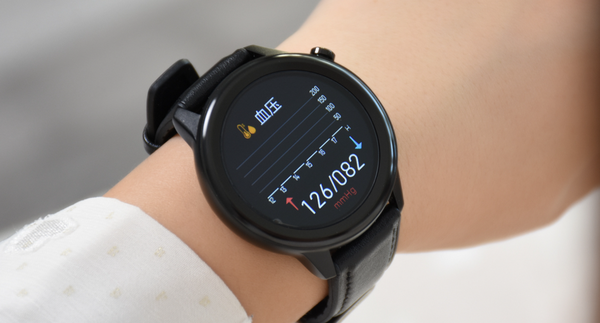National subsidies tiered subsidies driving millions-level phone replacement wave; new policy activating 6000+ high-end market growth engine
-
The 300 billion yuan special government bonds provide solid financial support for the replacement of old consumer goods with new ones, promoting the coordinated development of traditional and emerging consumer sectors. -
The 3C subsidy has driven sales of millions of new phones, with sales in January 2025 increasing by 41% year over year. Sales of high-end models priced between 4,000 and 5,999 yuan have seen the highest growth, surging by up to 74%. -
Subsidy measures for high-end smartphones priced over 6,000 yuan are expected to gradually expand to more e-commerce platforms and device models.
At the beginning of 2025, the Chinese government rolled out another "policy package" to boost consumption. On March 16, the General Office of the Communist Party of China Central Committee and the State Council issued the "Action Plan to Revitalize Consumption," which explicitly proposed allocating 300 billion yuan in ultra-long-term special treasury bonds to further support the replacement of old consumer goods with new ones. For the first time, the plan incorporated "stabilizing the stock market and property market" into the strategic framework for promoting consumption, while expanding subsidy coverage from traditional home appliances and automobiles to emerging consumer sectors such as smartwatches and AI glasses.

According to data from the Ministry of Commerce, since the implementation of the "national subsidy" policy for consumer goods trade-in in 2025, as of March 16, it has stimulated the replacement of more than 26 million home appliances and 51 million mobile phones and other digital products. The policy's "real money" leverage effect has initially emerged. With the new round of policy enhancements, it is expected to lay the foundation for the recovery of domestic consumption throughout the year.
300 billion yuan in government bonds invested: Subsidy policies expanded in categories and tiers
The "Action Plan to Boost Consumption" has for the first time included "stabilizing the stock market and real estate market" in the consumption promotion policy system, signaling a shift in the national logic of boosting consumption from single commodity subsidies to overall confidence support. The policy simultaneously designates 300 billion yuan in ultra-long-term special treasury bonds as a fiscal bottom-line tool, with the first batch of 81 billion yuan pre-allocated to local governments. Matching funds in Heilongjiang, Guangdong, and other regions have been smoothly disbursed, forming a central-local coordinated financial safety net.
The new round of subsidies breaks through the traditional scope of home appliances, mobile phones, tablets, smartwatches, and cars, extending the "national subsidy" catalog to include robotic vacuum cleaners, AI glasses, and other smart hardware. The subsidy levels are finely stratified: for cars, subsidies are tiered at RMB 15,000-20,000 for scrapping and updating, and up to RMB 15,000 for replacement updates; for home appliances and digital products, subsidies are tiered at 15%-20% of the selling price, with a maximum of RMB 2,000 per individual. This design of "ensuring basics for basic categories and driving growth for emerging categories" not only stabilizes the basic consumer base of large commodities but also targets new consumer growth points.

It is worth noting that the current policy focuses on cultivating a sustainable consumption ecosystem. Through 22 pilot programs for the circulation of second-hand goods, it aims to stimulate the existing market by using a dual-lever approach of "old machine trade-in + government subsidies" for dealers. According to the budget report, not only has the scope of the new-for-old consumer policy been expanded, but the subsidy application process will also be optimized.
3C Subsidy Effectiveness: The Mobile Phone Market Forms a Multi-Layered Activation Effect
Taking the mobile phone category consumption market as an example, the effect of 3C subsidies can be observed. Under the promotion of the national 3C subsidy policy, the smartphone market has shown unprecedented growth momentum. CINNO Research data shows that in January 2025, domestic smartphone sales reached 33.76 million units, surging by 41% year-over-year and growing by 38% month-over-month, setting a new historical record for a single month.
CINNO Research's chief analyst Zhou Hua believes this surge is no coincidence: "This achievement is primarily attributed to the dual boost from national subsidy policies and the Spring Festival seasonal effect. The further enhanced subsidy measures in March (especially the discounts for designated models priced above 6,000 yuan) are expected to have more fully unleashed the vitality of the entire smartphone market."
In the price range of 1000-1999 yuan, the Honor X series, Huawei Enjoy series, and Redmi Note series have become the biggest beneficiaries of subsidies. Consumers in this price range are extremely sensitive to prices, and the government's 15% purchase subsidy effectively lowers the decision-making threshold. It is noteworthy that some county-level markets have seen a "new machine purchase + old machine trade-in" composite subsidy model, further reducing the actual purchase cost and stimulating a significant demand for upgrades in lower-tier markets.

"The subsidy policy has not only driven a surge in sales of smartphones priced around 1,000 yuan but has also significantly stimulated the mid-to-high-end market, with notable increases in sales of Huawei's Pura and Mate series as well as the iPhone digital series," Zhou Hua stated. Due to the national 3C subsidy policy, the domestic smartphone market exhibited a rapid growth trend in the last ten days of January, from the 22nd to the 31st. According to monitoring data from CINNO Research, the domestic smart phone market sales in January reached 33.76 million units, a year-on-year increase of 41% and a month-on-month increase of 38%, marking a historical monthly sales high. This has significantly activated market demand in a short period. In terms of price ranges, the national subsidy has led to a multi-layered market activation effect, with the 5,000 to 5,999 yuan price segment being particularly active, while the 4,000 to 4,999 yuan price segment saw a year-on-year growth of 74%, and the 1,000 to 1,999 yuan price segment also experienced a considerable increase.
Subsidy Boost: Igniting a New Engine for the High-End Smartphone Market
Starting from March 6, 2025, the Ministry of Commerce and other departments will introduce a purchase subsidy policy for high-end smartphones priced above 6,000 yuan. The policy offers an instant discount of 10% of the final sales price, with a maximum subsidy of 1,000 yuan. Each user is limited to one discount. Currently, this subsidy measure is only implemented on the Taobao platform for some designated models. However, it is widely expected in the industry that as the new national subsidy policy is further implemented and subsidy funds are in place, the policy will gradually expand to other e-commerce platforms such as JD.com, Pinduoduo, as well as offline dealers and retailers, benefiting a wider consumer base.

From the consumer's perspective, this move not only significantly lowers the entry barrier for high-end smartphones but also stimulates consumers' demand for upgrades to some extent, accelerating the product refresh cycle. As Zhou Hua said: "The subsidy policy makes consumers' choices for high-end products more rational and proactive, with technologically advanced and higher quality models being more favored in the market." At the same time, this policy also helps to promote the development of domestic mid-to-high-end smartphones, further balancing the consumption demands between first- and second-tier cities and third- and fourth-tier markets, thus promoting regional balanced development.
For the entire industry, the increase in discounts directly reduces consumers' purchasing costs and provides mobile phone manufacturers with clearer market signals, encouraging them to accelerate technological innovation and product iteration. Looking ahead, with the expansion of subsidy policies and intensified market competition, the high-end smartphone market is expected to enter a more stable growth cycle, injecting new vitality into the annual consumer market.
【Copyright and Disclaimer】The above information is collected and organized by PlastMatch. The copyright belongs to the original author. This article is reprinted for the purpose of providing more information, and it does not imply that PlastMatch endorses the views expressed in the article or guarantees its accuracy. If there are any errors in the source attribution or if your legitimate rights have been infringed, please contact us, and we will promptly correct or remove the content. If other media, websites, or individuals use the aforementioned content, they must clearly indicate the original source and origin of the work and assume legal responsibility on their own.
Most Popular
-

List Released! Mexico Announces 50% Tariff On 1,371 China Product Categories
-

Nissan Cuts Production of New Leaf EV in Half Due to Battery Shortage
-

New Breakthrough in Domestic Adiponitrile! Observing the Rise of China's Nylon Industry Chain from Tianchen Qixiang's Production
-

Dow, Wanhua, Huntsman Intensively Raise Prices! Who Controls the Global MDI Prices?
-

Clariant Unveils Cost-Cutting Plan Details, Plans to Shut Down Multiple Plants






